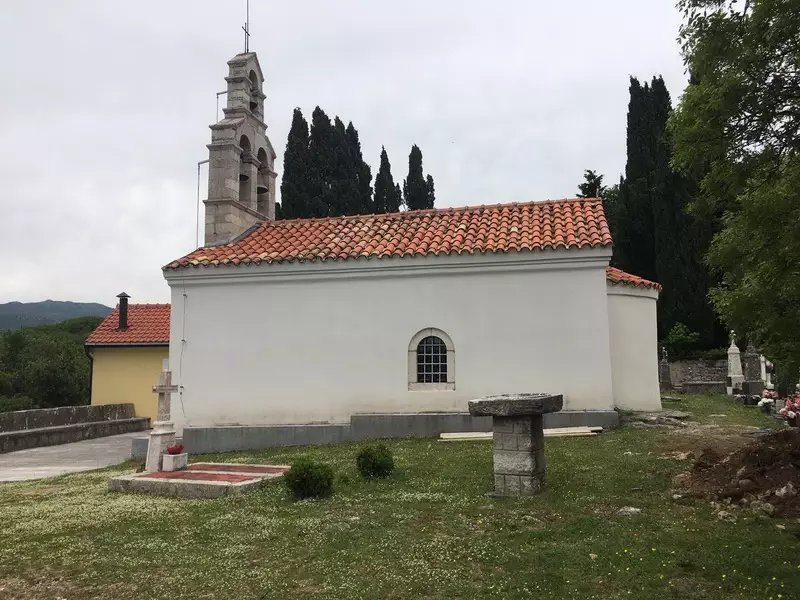28 June, 2020 - The village of Suscepan, 1.5 km from the center of Herceg Novi, and at an altitude of 300 metres was, according to the architect Marin Đurašin (1954 - 2000), the centre of ancient Troy.
Đurašin’s theory (he also wrote a book on the subject, although his death prevented him from publishing it) was that the whole of Boka Kotorska was ancient Troy, and that Suscepan was its centre. Troy, or Elijah (ancient Greek: Τροία [Troía] or Τροίας [Troías], or Ίλιον [Ílion] or Ίλιος [Ílios]; Latin: Troia, or Ilium; Turkish: Truva or Troya), was a legendary city and the scene of Trojan war, which is partly depicted in Homer’s Iliad, an epic poem in ancient Greek composed in the 9th or 8th century BC.
This assumption did not have a greater impact, nor did it lead to greater tourist interest in the village, which offers a beautiful view of the entrance to and the interior of the Bay of Kotor.
The village of Suscepan was assumed inhabited in the Middle Ages and has been under Turkish, Venetian, Austro-Hungarian rule. It had, in the main, followed the fate of Herceg Novi, then that of the whole of Boka Kotorska and Montenegro.
Until World War II, the locals lived mainly from agriculture and livestock. Olive oil and wine were produced, grain was sown and vegetables were planted. Fruit was also grown - most often figs. A few inhabitants worked in nearby Herceg Novi - mostly in trade and tourism.

Suscepan - Bostanj Spring
Today, no-one in the village is exclusively engaged in agriculture. Most often it is an additional activity or carried out solely to meet individual need.
Until the increased construction at the end of the last century, the village looked like a typical coastal Boka village. The houses were built at a distance of 500 - 700 metres, and the hamlets were connected by paths paved with stone. They were built on slopes and along the perimeter of rare arable land. Today, almost every house has a tarmac - or more often concrete - road.
The few inhabited old houses in the village are built of local stone. Upstairs is a living area for the family, and the ground floor-barn is used to accommodate wine, oil, grain, flour and other foodstuffs. In some houses on the ground floor there are cattle.
In front of the village houses is a part of the yard - terraces - paved with stone and surrounded by a low wall-seat. In some yards there was also a “bistjerna” for collecting rainwater. The terrace was covered with vines and served as a small extension of the house proper, for gathering after a hard day’s work. In the summer, sometimes a table was brought out, so people could eat on the terrace.
The garden also has a threshing floor - a round paved surface covered with stone slabs. This was used for threshing grain.
The village does not have an official centre, but the population used to gather around the Bostanj spring. The spring is channelled, the area around it paved and has a stone wall-seat. In addition to this spring, there is also a spring in Smokovac and Zirina.

Saint Stephen’s Church
During religious festivals, locals gather around the village church of Saint Stephen. The church was built at the end of the 19th century, but it is assumed that there had been a building there previously. The church is a single-nave, vaulted building with an apse of a semicircular base and a bell tower on a pediment with three bell windows. It is built of stone, but all the walls, except at the front, are plastered. According to the motifs from the preserved parapet slab, which is today in a museum, it is assumed that there was a pre-Romanesque church on the site, dating from the 10th or 11th century.
The Church of Saint Stephen
The iconostasis is the work of Corfu icon painter N. Aspioti. Around the church is a gate with tombs. It is thought by some that the church was built by the Bosnian king Tvrtko (founder of Herceg Novi) or Stevan Kosača.
The Legend of the Village's Origin
Legend has it that the Bosnian King Tvrtko I began the construction of the church of St. Stephen in the centre of Herceg Novi, inviting the most famous masters of that time from Kotor and Dubrovnik. But one morning, the stone disappeared from the square and appeared about 1.5 kilometers from the city - in its current location. The king was advised to build a church there, which he did. According to the legend, the settlement that started to grow around the church was named Sveti Stefan (Saint Stephen) - later Suscepan.
Each to Their "Own" Troy
German entrepreneur and amateur archaeologist Heinrich Schliemann began excavations on the hill of Hisarlich in today's northwestern Turkey, near the sea coast, southwest of the Dardanelles under Mount Ida in 1873 and claimed that this was the location of ancient Troy.
Researcher Ilija Ogorelica claims that ancient Troy was located near Belgrade, more precisely on the border of the settlements of Rušanj, Ripanj and Lipovačke šume. Milutin Jaćimović claims that Troy is "the Serbian historical capital of Skadar".
Mexican Roberto Salinas Price (1936 - 2012), philologist and wealthy Mexican passionate homerologist, first put forward the idea in the 1980s that Troy was on the east coast of the Adriatic and that the Trojan War had taken place in the Neretva Valley, and that the holy the city of Troy was on the site of present-day Gabela.
There are also theories that Troy was located at Ljubuški in Croatia, and also in Macedonia,… but with no scientific evidence supporting the claims.
/S.Kosić/








